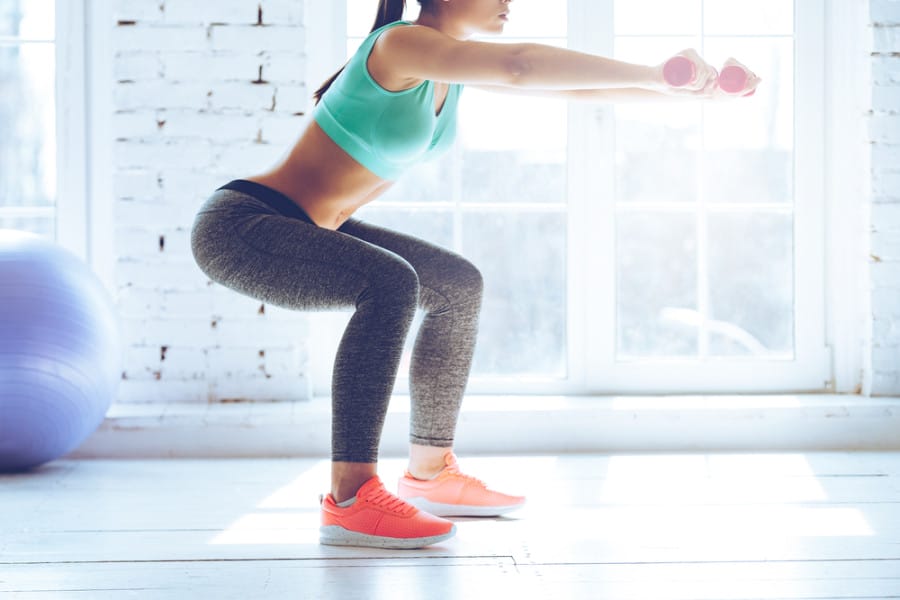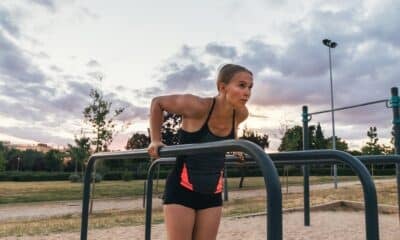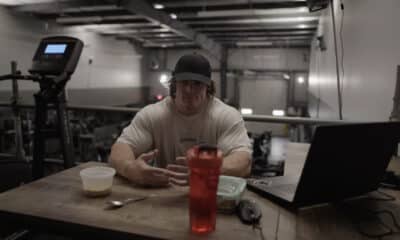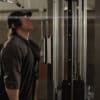How To Do A Squat The Right Way
Walk into any gym, and you’re guaranteed to see someone either on a squat rack or squatting with a pair of dumbbells in the free weight area. Squats are one of the most fundamental—and functional—movements, which means they’re not just reserved for leg day.
“We mimic squats dozens of times every day, from sitting down onto a chair, to getting into our car, to picking up a bag of groceries off the floor,” says Katherine Kalaj, PT, DPT, a physical therapist at Bespoke Treatments in NYC. “Doing squats in the gym helps us maintain the strength we need to do all of those things much more easily as we age.”
But adding squats to your routine is just as important as doing them with the right form. Here’s exactly how to do squats, plus common mistakes, and tips and tricks to help you modify or level up.
How to do a squat the right way
Before adding weight, you’ll want to nail the bodyweight squat with perfect form. Here’s how to do a basic bodyweight squat:
- Stand with your feet shoulder-width apart, and keep your toes pointing slightly outward.
- Keep your back straight and either hold out your arms straight in front of you, place your hands on your hips, or clasp them together in front of you. (Do whatever feels most comfortable!)
- Then, push your hips back, as if you’re about to sit into a chair. Bend your knees and lower your body, keeping your back straight and making sure your knees are in line with your toes.
- Lower yourself as far as your flexibility allows, keeping your weight on your heels and the balls of your feet rather than on your toes.
- To stand back up, push through your heels, returning to the starting position.
The muscles you work when squatting
You may reserve them for leg day, but squats are one of the best full-body movements you can do. They target your core, which includes your abs and back. Different squat variations, like overhead squats and goblet squats, can also activate your upper-body muscles for a more comprehensive move.
According to the National Academy of Sports Medicine (NASM), squatting muscles worked include:
- Gluteus maximus (largest butt muscle)
- Quadriceps (or quads, for short)
- Hamstrings
- Erector spinae (muscles along your spine and back)
- Inner thigh muscles
- Calves
- Abdominal muscles, including your rectus abdominis (six-pack ab muscles) and your external obliques (side abs)
Squat benefits that’ll convince you to add them to your routine
1. Better core strength
Squats certainly build leg strength and help round out your quads and glutes, but this exercise also improves core strength and balance.
Squats activate many different muscles in your core, including the transversus abdominis, internal and external obliques, and rectus abdominis—and building these muscles can help strengthen your core.
A stronger core can help improve your posture and balance and can make everyday activities easier.
2. A stronger lower body
Squats build out your leg and glute muscles, and the perks go beyond just filling out your jeans.
- Stand with your feet wider than hip-width apart, your toes facing slightly outward, holding a kettlebell by the handle with your arms straight down.
- Keeping your back straight, push your hips back, as if you’re about to sit into a chair. Bend your knees and lower your body, keeping your back straight and making sure your knees are in line with your toes.
- Lower yourself as far as your flexibility allows, keeping your weight on your heels and the balls of your feet rather than on your toes.
- To stand back up, push through your heels, returning to the starting position.
4. Goblet squat
Goblet squats can effectively target your quads to improve the strength and integrity of your knee joint and the tendons surrounding your knee, according to Kalaj. Holding the weight up in front of you adds an extra challenge for your core stability, she says.
- Hold a kettlebell against your chest with both hands, gripping the handles near the base.
- Keeping your back straight, push your hips back, as if you’re about to sit into a chair. Bend your knees and lower your body, keeping your back straight and making sure your knees are in line with your toes.
- Lower yourself as far as your flexibility allows, keeping your weight on your heels and the balls of your feet rather than on your toes.
- To stand back up, push through your heels, returning to the starting position.
5. Barbell back squat
Barbell back squats are great for more experienced lifters looking to lift heavier weights to strengthen their lower body, core, and lower back, she says.
- Set up in a rack with your feet about shoulder-width apart, and the bar resting across your upper back. Grab the bar with an overhand grip (palms facing forward).
- Unrack the bar carefully and set your feet at a comfortable stance with your feet slightly turned out.
- Keeping your back straight, push your hips back, as if you’re about to sit into a chair. Bend your knees and lower your body, keeping your back straight and making sure your knees are in line with your toes.
- Lower yourself as far as your flexibility allows, keeping your weight on your heels and the balls of your feet rather than on your toes.
- To stand back up, push through your heels, returning to the starting position.
How many calories do squats burn—and is it even important?
The calories you burn while squatting depends on the intensity, duration, and your weight. Bodyweight squats are low-intensity and will burn around 20 calories for every 5 minutes. The higher the intensity of the squat, the more calories you’ll burn.
Additionally, building muscle burns more calories over time. So, the more muscle mass you have, the more calories you’ll burn during a squatting session.
It’s important to focus on the benefits of squats for your body, such as increasing lower-body strength, improving core stability, and rounding out your glutes, instead of just calories burned, Kalaj advises.
Reducing exercise to only calories burned can lead to disordered behaviors. It’s crucial to incorporate physical activity you enjoy into your everyday routine, ensuring you’re making the best choices for your health, she adds.
Common mistakes when squatting
Maintaining proper form when squatting ensures you’re targeting the right muscles and helps prevent injury. Make sure your form is correct by avoiding these common mistakes next time you squat.
1. Your torso is too upright
Keeping your chest up and your eyes facing forward decreases core engagement, Kalaj says. Allow a little forward lean and pick a point on the ground to focus on, she advises.
2. Your knees collapse in
Having the knees collapse as you’re squatting, or “knock knees,” is a common mistake that can lead to knee and ACL injuries. Focus on keeping your knees pushed out and parallel to the floor, and consider using a resistance band around your knees to help keep them aligned.
3. You excessively arch your back
Attempting a very deep squat without the hip mobility or core stability to support it can lead to arching your back, which may contribute to lower back pain and spine pressure. Keep your spine neutral and warm up with a hip mobility drill to prevent overarching, Kalaj recommends.
4. You progress your load too quickly
Advancing the weight you use too quickly after mastering your squat form can cause injuries to your knees, hips, or back, according to Kalaj. It’s essential to progress weights gradually and ensure comfort and strength with one weight before moving on to the next, she suggests.
Always prioritize proper form over ego when it comes to lifting, and choose lighter weights if you can’t perform an exercise with correct form, she advises.

















